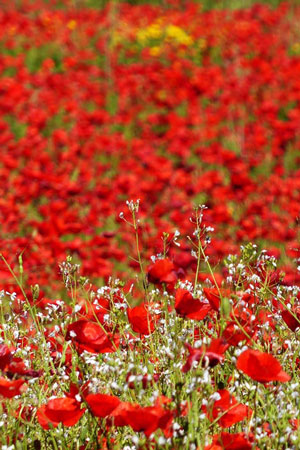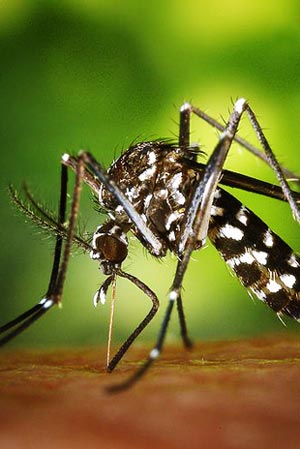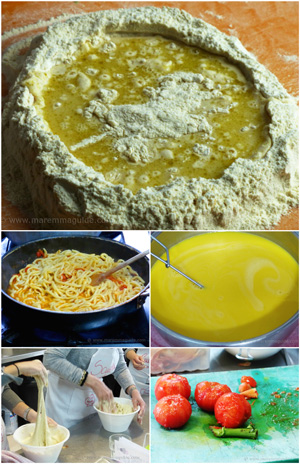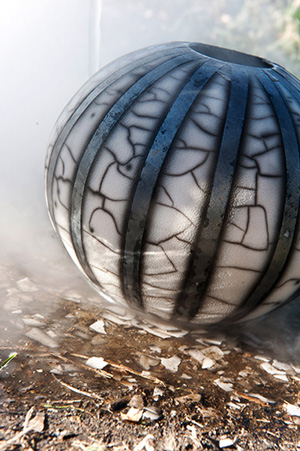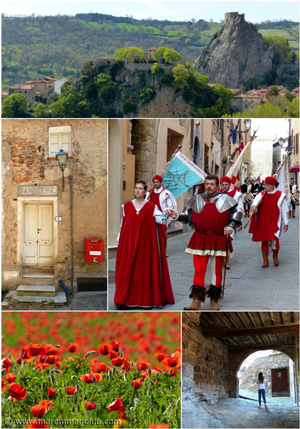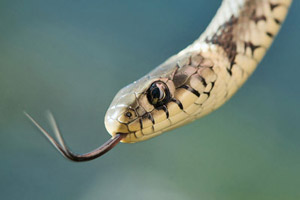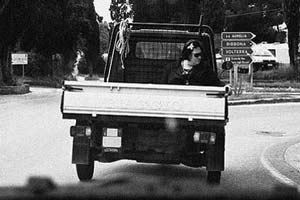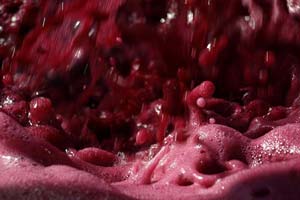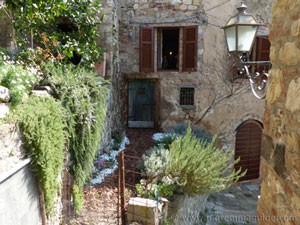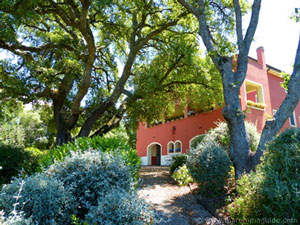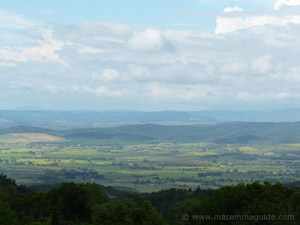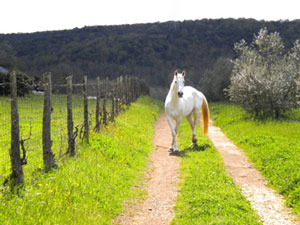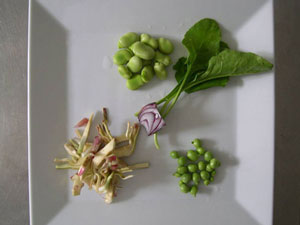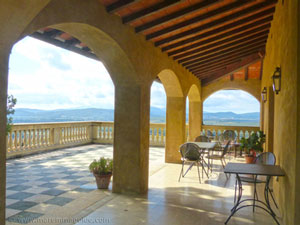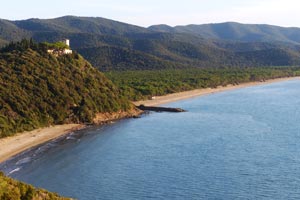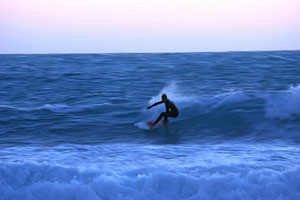The Bosco della Sterpaia
Walk in a wood that very few ever will
The Bosco della Sterpaia is something very special indeed: it is a very rare humid forest, all that remains of once many that covered the Italian coastal peninsula. And a living record of what Maremma's landscape was like for centuries before a wholescale system of irrigation, that first began in 1588 when this part of Maremma was occupied by the French, changed it forever.
But few people will ever walk through it because most people don't know it is there even though they sit on one of Maremma's best beaches or in the pineta that separates it from the wood just feet away. Or, if they do, the attraction of the beach is more enticing.
And I cannot blame them, for the beaches in the Parco Costiero della Sterpaia are amongst the very best beaches in Tuscany.
But if there is an opportunity in life to hug a centuries old oak tree - that will take at least two of you to embrace it - that stands oh, so tall in a carpet of crisp white wild garlic flowers under a blue sky, you know where you can find me :)

If you have children with you
Some things to be aware of if you have children with you.
The wood isn't large and the "annello" (ring) path through it - which brings you right back to the gateway - isn't a long one and is all flat going. Which is great as far as toddlers, little ones and pushchairs go and isn't going to mean you having to carry them on your shoulders to finish the route.
But for any older children, apart from photographing snowdrops - there were lots in flower in May - and some wooden sculptures that have seen better days, some bronze plaques, and things that catch their eye, there isn't much to keep them amused.
Not that is, unless they happen to loose a very "precious" piece of green plastic along the walk and have to trace their footsteps to find it, as my Sophia did! Then that will keep them busy for sometime when the whole Bosco is this green.

But then again, if you tell them about that the oak tree in front of them is more than a hundred years old and that leeches were once cultivated from the muddy marshy bits, that should prick their ears up a bit!
There are more tit-bits of information in the brief history section below.

The wood of oaks - "Il bosco di querce"
The Bosco della Sterpaia is an oak wood of "Il cerro" - Austrian oak - (Quercus cerris), "la roverella" - downy oak - (Quercus pubescens), and "la farnia" - English oak - (Quercus robur).
Amongst the native plants you will also see palms and other exotics that are left-overs from before the park was established and when the land was divided, illegally, into private lots.
When one of them falls, as did a monumental Quercus amplifolia in February 2000, rather than cut it up and remove it, which would deprive the park of a secular monument, in accordance with the conservation of the habitat, the park authorities left the tree where it fell. Like the skeleton of a huge dinosaur reminding us of its centuries of history. The next spring, the part of the truck still connected to the earth by living roots sprang new growth: the ancient oak wasn't dead yet :)
 Wild garlic - "L'aglio triquetro" in Italian and the "three-cornered leek" in English (Allium triquetrum) - grows in carpets on the woodland floor beneath the oaks. The whole plant, including the flowers, is edible raw or cooked.
Wild garlic - "L'aglio triquetro" in Italian and the "three-cornered leek" in English (Allium triquetrum) - grows in carpets on the woodland floor beneath the oaks. The whole plant, including the flowers, is edible raw or cooked.There is a lovely information board within the Bosco called , "Il nido dei nidi" - the nest of nests, which shows in a wonderful way just how "alive" a standing oak tree is with creatures and their many homes and similarly how many it supports when it is dead.
You won't need to be able to read a word of Italian to understand it :) And, at about half-way around the route, it will give you a nice opportunity for your children to sop and see how many woodland wonders they have already spotted.

The other trees that you will see include the "Acero trilobo" - Montpellier Maple (Acer monspessulanum), the "Acero campestre" - field maple (Acer campestris).
The "Orniello" or "Frassino di manna", South European flowering ash or manna ash (Fraxinus ornus), from which crystalline stalactite "manna" a mild laxative and natural sweetener (mannitol), and now a registered Slow Food, was once produced.
Making manna
The ash tree was deliberately put under water stress in the second or third week of July each year, by exposing its upper larger roots. Once the ground was completely dry, the leaves wilted and no longer dark green but green and yellow, a special knife called the mannaruolo was used by skilled hands to make transverse incisions ("ntacche") at the base of the tree trunk, about five to ten centimetres from the ground. Every morning thereafter until late September, another incision would be made, at about two to three centimetres above the one before.
And the "Frassino ossifillo" - narrow-leafed ash (Fraxinus oxycarpa), and the "Olmo campestre" - Filed Elm (Ulmus campestris). Reaching a height of 40 metres with a diameter of 2-3 metres, this beauty can live for five hundred years!
A little of the history of the Bosco della Sterpaia
All of the woodland along the coastline in the Parco Costiero della Sterpaia is actually the "Bosco della Sterpaia", but it is the enclosed section - the area closed to the public except to guided tours - that most people know as the "Bosco della Sterpaia".
Which means that, if you don't get the opportunity to join a guided tour, you can still see many of the woodland floor plants and the creatures that live in it by taking a walk behind the dunes.
 One of the wooden sculpture intallations that is in need of a little maintenance.
One of the wooden sculpture intallations that is in need of a little maintenance.
The property Francheschi
For a long time the Bosco della Sterpaia was part of the Vignale estate, a property of vast dimensions belonging to the noble Pisan family of Franceschi. An estate of about eight thousand hectares which ran along the entire coastal stretch between the Torre del Sale to the north and Prato Ranieri to the south, and embraced a large section of the hills behind Riotorto and those of Montioni.
In the late nineteenth century it was divided into two separate, but still important and substantial, estates.

The Counts Figoli des Geneys
The coastal section, which included the entire Bosco della Sterpaia area, was acquired by the Counts Figoli des Geneys, a noble family from Arenzano, near Genoa.
Under the leadership of the new owners the process of agricultural development initiated by the Franceschi during the late nineteenth century continued with deforestation, land reclamation and the extension of the local road network. Extensive areas were cultivated and sharecropping introduced.
As in the middle ages, much of the plain of the River Cornia behind the coastal park, was given over to sheep farming. Every year at the beginning of autumn, from the higher areas of the metalliferous hills and mountains of the Tuscan-Emilian Appenines, thousands of sheep would descend to the grassy pastures and arable land of the plain and remain there until spring.
But the ancient wood remained untouched because it's natural resources were more valuable.
and continued until the second half of the twentieth century to be used for cattle grazing by local farmers and as a hunting reserve.
 The colours of Bosco della Sterpaia in December :)
The colours of Bosco della Sterpaia in December :)
Horses, Maremmano cattle, pigs and wild buffalo
Until the second half of the twentieth century, as well as providing charcoal, firewood and construction, the Sterpaia wood provided grazing and shelter to permanent herds of horses, cattle and buffalo raised in the wild. And, with its high high acorn production, it was also home to large herds of pigs.
But that was not all. The wood and its surrounding marshes, although rife with malaria carrying mosquitoes, were highly prized lowland plots; for they were rich in game. The Bosco della Sterpaia remained a hunting reserve and hosted many a wild boar hunt.
As well as industry of leech harvesting!
Salt production and fish
All around the wood was a hive of economic activity.
Of great importance was the once lucrative production of salt for the export markets of Florence and Siena in the salt basins that belonged to the city of Piombino. Salt also used to preserve the fish farmed in lakes in Piombino and Rimigliano.
The lakes in both places were connected to the sea and the fish trapped with weirs.
Ancient wheat
Today, the Bosco della Sterpaia is flanked in its coastal side by a new initiative to seed, grow and cultivate the grain of the wheat variety that was originally grown here in Maremma. Last year, for the first year, a small quantity of flour was produced, sold to the public, and used by a local bakers to make a speciality bread and a local agriturismo to make pizza. The flour and its products sold out very fast.
This ancient wheat produces less ears and is taller than its modern cultivated counterparts, which means it produces less grain and is more susceptible to collapsing in winds and heavy rains. However, it has a much higher gluten, and hence, protein content.
How to visit the Bosco della Sterpaia
Visits to the Bosco della Sterpaia are by guided tour only. The environmental guides are employed by the Parci della Val di Cornia and have a wealth of information to share about the area and answers to any question you could possibly ask.
But, and this is the downside, you will need a minimum of twenty people in your party to book a tour.
The telephone number is +39 0565 226445.
The tour takes about two hours.

Getting there
If it rains heavily the night before you visit, you may find the most direct paths from the car park to the wood under water, with no dryer passing places either side. We did at the beginning of May when these photographs were taken. In which case, there are two alternative routes to arrive at the entrance gates.
The first, and most direct, if you are already at the Bosco della Sterpaia car park - the one at the very end of the gravel track - is to head over the bridge over the Cervia Canal and join the footpath that runs parallel behind the beach. Then head inland again to the wood.
None of us had come prepared with Wellington boots: after all we are talking about a warm and gloriously sunny early May day in Tuscany!
If this second path is also under water in parts - it was in May - and you don't want to get muddy trying to skirt the pools, then continue onto the beach and walk along the shore (headed south) for a short distance. Head inland and follow the path over the canal that then takes you through a lovely tree-lined road where you will find wild asparagus growing in spring. Fresh, green tips perfect for nibbling on!

At its end, turn left onto the single-track road that skirts the fenced-in Bosco and its entrance is just a few feet away.
This single-track road continues all the way to the access road to the beach which you will have driven along to reach the car parks and so makes for an alternative route back avoiding the beach. Be aware, however, that apart from a very short section, there is no cover and so on a hot day you will be directly under the sun until you reach your car.
For me, the route back along the sandy avenue and beach is by far the prettiest.
 The intertidal dune area between the path and Carlappiano beach.
The intertidal dune area between the path and Carlappiano beach.The wild flowers along the path.
 Wild flowers in Maremma Tuscany in May behind the beach in the Parco Costiero della Sterpaia
Wild flowers in Maremma Tuscany in May behind the beach in the Parco Costiero della Sterpaia
The tiny things you don't want eating you!
You will meet a lot of these large long-legged critters: this one is a dead specimen that tried to dine on my husband! So take an anti-mosquito repellent with you, or put a long-sleeved cover-up on whilst you are there.
Having said that these little vampires were trying to drink from me through my jeans! so I didn't bother. Best trick is not to stand still for very long! Taking photos becomes a game of waving hands around to flick them off you whilst trying to get a shot!

The map
Explore some more...
